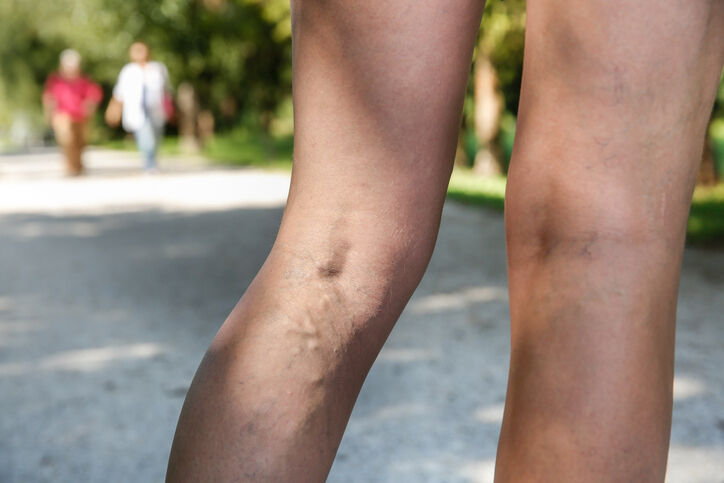
Do Varicose Veins Cause Swelling?
One common characteristic of varicose veins is swelling. Learn why this happens and how you can reduce the swelling.

Joint pain and varicose veins both cause discomfort in the knee area. Is there a connection between the two conditions?
Leg pain is at the top of the list for varicose vein symptoms. When varicose veins develop around the knee, it could be easy to associate joint pain with varicose veins mistakenly. However, joint pain associated with arthritis is separate from the discomfort of varicose veins, which is a vascular disorder.
Joint pain and varicose veins share other characteristics besides pain. Both cause excessive swelling, but that’s where the similarities end. If you’re experiencing leg pain, your next step is to get it evaluated by a vein specialist to determine if it’s caused by a vascular problem or a joint issue.
Despite both causing pain and swelling, joint pain and varicose veins are two different conditions with distinct causes. As such, varicose veins does not cause joint pain.
The root cause of varicose veins lies in your veins. To circulate blood, tiny valves in your veins close and push blood back to the heart. When these valves weaken, blood backflows and pools in the vein, causing a varicose vein to emerge from under the skin. Varicose vein symptoms include pain, swelling, cramping, and a sensation of heaviness in the leg. If the diseased vein is deeper within the leg, you may not see visible symptoms, but you’ll still feel pain and swelling.
On the other hand, joint pain is most likely due to arthritis, which occurs when the cartilage surrounding the knee joint wears down from age or injury. Without the cartilage’s protection, the bones of the joint rub against each other, leading to pain, swelling, and tenderness. A common symptom of arthritis is stiffness in the joint, which you won’t experience with varicose veins.
Arthritis and varicose veins share several risk factors, which may be why the two conditions are often thought to be linked. Both conditions can affect people in their later years and those who are overweight. But, as varicose veins and arthritis are unconnected medical conditions, you can speak to a vein specialist if your pain is related to faulty or diseased varicose veins.
It’s no fun to experience joint pain and varicose veins at the same time. But you can take measures to relieve the pain in your joints and varicose veins.
Exercise can shed the excess pounds that add stress to your veins and joints. Low-impact aerobic activities such as swimming, biking, and walking engage the calf muscles to help pump blood through the veins while also putting less stress on the joints. If you’ve been diagnosed with arthritis, you can work with a physical therapist to strengthen the muscles around the joints to reduce pain and stiffness.
Suppose your leg pain stems from varicose veins. In that case, you can consider one of several minimally invasive, outpatient treatments that specifically eliminate diseased veins. Sclerotherapy involves using a safe solution to seal the damaged vein. With laser ablation and radiofrequency ablation, the doctor destroys a swollen vein with heat from a laser or radiofrequency waves. During ambulatory phlebectomy, the varicose vein is removed through two tiny incisions.
Center for Vein Restoration (CVR) operates four offices in New Mexico, led by two experienced vein specialists qualified to treat all types of vascular disorders. Michael Harding, MD, is board-certified in vascular medicine, cardiology, and internal medicine. Chandran Vedamanikam, MD, is a board-certified phlebologist in venous and lymphatic medicine and family practice. Contact their offices today for a consultation!
801 Encino Place NE #C-12,
Albuquerque, NM 87102
500 E Walnut Street
Deming, NM 88030
2801 E. Missouri Avenue
Suite 27
Las Cruces, NM 88011
2220 Grande Boulevard SE
Suite B
Rio Rancho, NM 87124